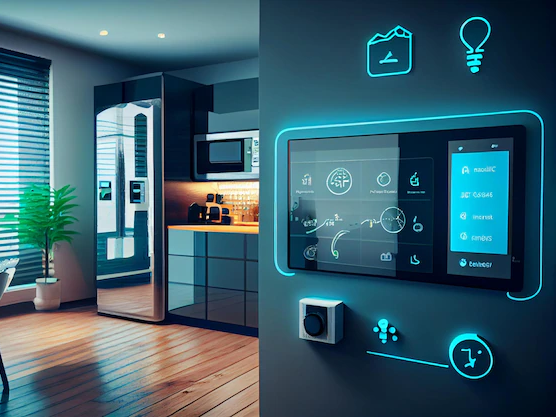In this era of rapid technological advancement, the concept of a ‘smart home’ has transitioned from a futuristic dream to a living reality for many. The evolution of smart home technology has brought about a significant change in how we interact with our living spaces, making everyday life more convenient, secure, and sustainable.
Introduction to Smart Home Technology
The roots of smart home technology date back to the invention of household appliances that could operate with minimal human intervention. Today, the landscape of smart home tech is vast and continually expanding, offering solutions that connect various aspects of home management to a centralized control system, often accessible via smartphones.
Advantages of Smart Homes
Convenience and Efficiency
Smart home technology streamlines daily tasks through automation and remote control capabilities. Imagine waking up to the aroma of freshly brewed coffee or having your living room lights dim automatically for a movie night, all orchestrated with the touch of a button or a simple voice command.
Increased Home Security and Safety
Smart security systems, including cameras, motion sensors, and automated door locks, offer homeowners peace of mind by enhancing their home’s security. These systems can send real-time alerts to your device, allowing you to monitor your home from anywhere.
Energy Efficiency and Sustainability
Smart thermostats and lighting are revolutionizing energy consumption in homes, enabling precise control over heating, cooling, and lighting. This not only reduces energy bills but also contributes to a more sustainable environment by minimizing wasteful energy use.
Types of Smart Home Devices
From smart speakers and voice assistants that act as the heart of your smart home ecosystem, to smart thermostats and lighting that adapt to your habits and preferences, and smart security systems that protect your home, the range of devices available today is impressive. Each plays a role in crafting a more connected, intelligent living environment.
Real-life Application and Benefits
Case studies of smart home integration highlight the transformative impact on homeowners’ lives, offering insights into the practical benefits beyond the novelty factor. Personal testimonies underscore the convenience and security that these technologies provide, painting a picture of a future where smart homes are the norm.
Overcoming Challenges and Concerns
Despite the advantages, two primary concerns often arise: the initial cost and questions surrounding privacy and security. While the cost of smart home devices can be an investment, their long-term savings and benefits can offset these concerns. Meanwhile, manufacturers continue to strengthen the security protocols of their products to protect users’ privacy.
The Future of Smart Home Technology
With AI and machine learning at the forefront, the future of smart home technology looks promising. These technologies will further refine the responsiveness and personalization of smart homes, making them even more intuitive and integrated into our daily lives.
How to Get Started with Smart Home Tech
For beginners interested in converting their house into a smart home, starting small is key. Consider which aspects of your home management you’d like to simplify or secure first, and explore devices within that domain. Gradually, as you become more comfortable, you can expand your smart home ecosystem.
Conclusion
The rise of smart home technology has brought about a revolution in home management, making it possible to live in homes that are not just shelters, but intelligent companions in our daily lives. The potential benefits are immense, from enhanced security to unparalleled convenience and sustainability. While challenges exist, the trajectory of smart home technology is undoubtedly upwards, bringing us closer to living in homes that truly understand and cater to our needs.
We invite you to explore the possibilities that smart home options offer for enhancing your lifestyle. After all, the future of home is not just smart; it’s intuitive, sustainable, and, most importantly, within reach.








